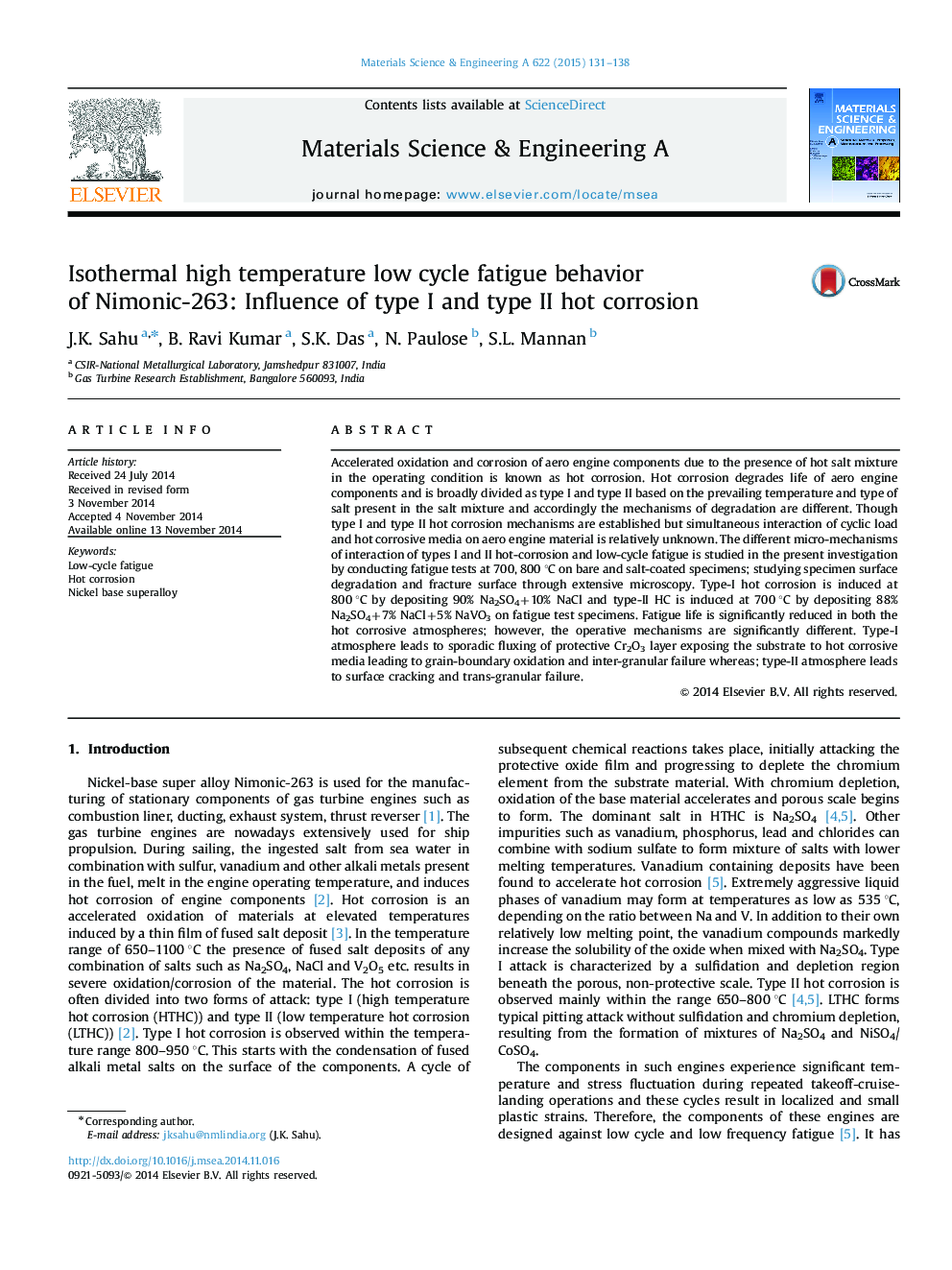| Article ID | Journal | Published Year | Pages | File Type |
|---|---|---|---|---|
| 1574490 | Materials Science and Engineering: A | 2015 | 8 Pages |
Abstract
Accelerated oxidation and corrosion of aero engine components due to the presence of hot salt mixture in the operating condition is known as hot corrosion. Hot corrosion degrades life of aero engine components and is broadly divided as type I and type II based on the prevailing temperature and type of salt present in the salt mixture and accordingly the mechanisms of degradation are different. Though type I and type II hot corrosion mechanisms are established but simultaneous interaction of cyclic load and hot corrosive media on aero engine material is relatively unknown. The different micro-mechanisms of interaction of types I and II hot-corrosion and low-cycle fatigue is studied in the present investigation by conducting fatigue tests at 700, 800 °C on bare and salt-coated specimens; studying specimen surface degradation and fracture surface through extensive microscopy. Type-I hot corrosion is induced at 800 °C by depositing 90% Na2SO4+10% NaCl and type-II HC is induced at 700 °C by depositing 88% Na2SO4+7% NaCl+5% NaVO3 on fatigue test specimens. Fatigue life is significantly reduced in both the hot corrosive atmospheres; however, the operative mechanisms are significantly different. Type-I atmosphere leads to sporadic fluxing of protective Cr2O3 layer exposing the substrate to hot corrosive media leading to grain-boundary oxidation and inter-granular failure whereas; type-II atmosphere leads to surface cracking and trans-granular failure.
Related Topics
Physical Sciences and Engineering
Materials Science
Materials Science (General)
Authors
J.K. Sahu, B. Ravi Kumar, S.K. Das, N. Paulose, S.L. Mannan,
